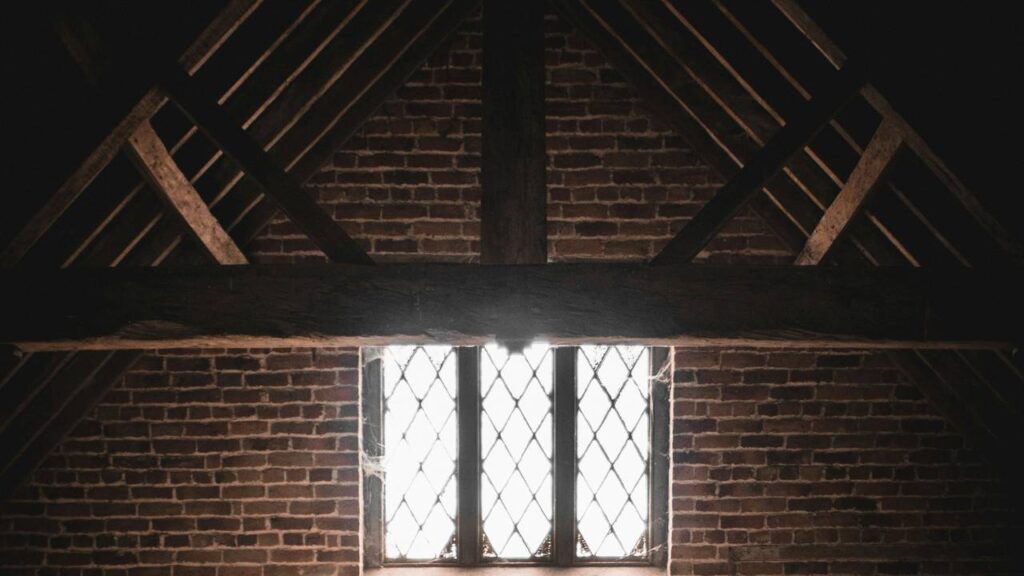Considering converting your attic into a cosy loft space? Understanding the regulations in Ireland is crucial to ensure your attic conversion is both compliant and safe. Whether you dream of an additional bedroom, office, or gym, knowing the rules can help prevent potential headaches later.
In Ireland, attic conversions have specific legal requirements that you must follow. From ensuring your roof structure can handle the extra load to making sure there’s adequate insulation and fire safety measures, each step must be carefully planned and executed. This guide will walk you through all the regulations and provide helpful tips to streamline your project.
Planning permission might not always be necessary, which is great news for many homeowners. However, certain criteria must be met to qualify for this exemption. Knowing these details can save you time and money, making your dream loft a hassle-free reality.
Understanding Attic Conversion Essentials
Before embarking on your attic conversion, there are crucial factors to consider such as determining if the space can be legally classified as habitable and assessing whether the available space can be efficiently converted.
Determining Habitable Status
Legal requirements define what qualifies as habitable space. In Ireland, your attic must adhere to specific building regulations. Key factors include headroom and natural light. The minimum headroom requirement is generally 2.4 metres over at least 50% of the usable floor area.
To ensure sufficient natural light, you may need to add roof windows or dormers. You also need proper ventilation to avoid moisture build-up which can lead to structural damage and health issues. Ensuring fire safety measures such as escape routes and smoke alarms is also essential for a habitable loft conversion.
Assessing Space for Conversion
Evaluating the space available in your attic is crucial. Not all lofts are suited for conversion due to size limitations or structural concerns. Measure the usable floor space, considering the headroom. For practical living conditions, a minimum floor area of 7 square metres is usually necessary.
Structural integrity is another important consideration. You may need to reinforce the floor joists to support the extra weight. Utilities such as plumbing and electrical wiring will need to be planned meticulously. Loft conversions might require adjustments to the existing layout to fit staircases without compromising the living space below.
Planning Permission Guidelines
When converting an attic in Ireland, understanding when you need planning permission and how to submit a planning application is crucial.
When Planning Permission is Required
You generally require planning permission for significant changes, such as installing dormer windows or altering the roof structure. If the conversion involves increasing the property’s height or changing its external appearance, you’ll need to seek approval.
Minor internal changes might not need planning permission if they don’t affect the structure. For instance, adding insulation or fitting additional lighting typically doesn’t require any formal permissions. If in doubt, it is prudent to consult your local planning authority.
Submitting a Planning Application
Submitting a planning application involves several steps. First, you must obtain detailed plans of the proposed conversion. These should include architectural drawings and specifications.
Next, submit these plans to your local council along with a completed application form and the required fee. You can find the necessary forms and guidance on your local council’s website.
Once submitted, the council will review your application and may request additional information. You may need to attend meetings or provide further details before receiving approval. This process can take several weeks, so plan accordingly.
Building Regulations and Compliance
To ensure your attic conversion meets Irish regulations, it’s crucial to follow specific guidelines regarding structural integrity, fire safety, and overall compliance. This ensures safety and avoids potential legal issues.
Adhering to Part B
Part B of the Irish Building Regulations focuses on fire safety. It’s essential to have fire doors installed to block the spread of fire and smoke. Your conversion must include proper escape routes, such as windows that are large enough to serve as emergency exits.
You’ll need a Certificate of Compliance from a registered professional, confirming that your conversion adheres to these requirements. Consult with fire safety experts to make sure your attic meets all necessary standards.
Structural Integrity and Safety
Ensuring the structural integrity of your attic is vital. This involves evaluating the existing structure and reinforcing it as needed. A structural engineer should be consulted to assess the load-bearing capacity of your attic floor. They will recommend any necessary enhancements to support the new use.
Modifications might include adding beams or joists to strengthen the framework. Ensuring that the new space can handle additional weight helps avoid structural failures and enhances safety.
Fire Safety Considerations
Fire safety is a primary concern for attic conversions. Along with fire doors, installing smoke alarms is mandatory. Smoke alarms should be interconnected and placed on each level of your home, including the converted attic space.
Stairs leading to the attic must also be fire-resistant. It’s important to use fire-retardant materials in walls and ceilings. Consult the Department of the Environment for guidelines on materials and other fire safety measures.
Incorporating fire safety measures protects your family and meets legal requirements. Working closely with professionals ensures your conversion is both safe and compliant.
Designing Your Attic Conversion
When designing your attic conversion, it’s crucial to make the best use of available space and natural light. Choosing the right windows and ensuring proper ventilation are also key factors to consider.
Maximising Space and Light
Creating an open and airy feel can make your attic conversion more welcoming. Using dormer windows or a balcony roof light can increase headroom and natural light.
Carefully plan the layout. Built-in storage solutions utilise awkward spaces efficiently. Consider placing larger furniture where the ceiling is highest. Opt for light colours and reflective surfaces to enhance brightness.
Choosing Windows and Ventilation
Selecting the right windows is essential for both light and ventilation. Velux windows are popular for their ability to flood a room with natural light. They come in various sizes and styles to fit your design needs.
Proper ventilation is crucial to avoid condensation and maintain air quality. Roof windows can be fitted with ventilation openings, or you might consider a mechanical system for consistent airflow.
Incorporating Insulation
Insulating your attic effectively will ensure it remains comfortable all year round. Use high-quality insulation material on both the roof and the walls. This will help keep the space warm in winter and cool in summer, while reducing energy costs.
Pay attention to areas around windows and other openings to avoid heat loss. Consider using environmentally friendly insulation options for better sustainability.
Selecting the Right Professionals
Transforming your attic is a substantial investment, involving various experts to ensure everything complies with regulations and meets your expectations. Choosing the right professionals, including an architect, structural engineer, and trustworthy contractor, is crucial for a successful project.
Hiring an Architect
An architect is essential for designing your attic conversion. They ensure that your plans comply with legal requirements and make the most of available space. Look for an architect with specific experience in loft conversions.
- Qualifications: Verify their credentials and any memberships in professional bodies.
- Portfolio: Request to see previous attic conversion projects and ask for client references.
- Communication: Ensure they understand your vision and can clearly articulate their ideas.
Correctly executed architectural designs can maximise your attic’s potential and add significant value to your home.
Engaging a Structural Engineer
A structural engineer is responsible for assessing whether your property can support the changes required for an attic conversion. They evaluate the building’s integrity and create detailed plans for structural modifications.
- Qualifications: Confirm that the engineer is certified and has experience with similar projects.
- Site Visit: They should conduct a thorough site visit to provide accurate assessments.
- Technical Expertise: Look for a professional who can address any issues that arise and solve complex structural problems.
A proper assessment ensures your attic conversion will be safe and structurally sound, meeting all regulatory standards.
Finding a Trustworthy Contractor
A trustworthy contractor brings all the plans to life. They coordinate the project, manage labour, and ensure the work adheres to your specifications.
- Reputation: Check online reviews and ask for recommendations.
- Previous Work: Visit sites of their prior projects if possible.
- Quotation and Contract: Obtain a detailed quotation and contract that outlines the scope of work, timeline, and costs.
Selecting the right contractor reduces the risk of delays and ensures the conversion process is smooth and efficient.
Ensuring Functional Access and Egress
Making sure your attic conversion offers easy and safe access, as well as complying with fire regulations, is crucial both for daily use and in case of emergencies.
Staircase Solutions
To convert your attic, one of the first considerations is the staircase. The type of staircase can vary, but it must be practical and meet building standards.
Whether you opt for a traditional staircase, spiral staircase, or space-saving staircase, each must provide secure and practical access.
Spiral staircases tend to be compact but might be uncomfortable for regular use. Meanwhile, traditional staircases require more space but offer better accessibility.
Venturing out of the sleek and compact realm, space-saving staircases strike a balance between these options by taking up less room while still offering reasonably comfortable access.
When choosing a staircase, always consider factors such as headroom, width, and slope to ensure usability and safety.
Emergency Exits and Fire Regulations
Incorporating safety measures is fundamental, especially for fire safety. Regulations typically require a clear and accessible emergency exit.
Self-closing fire doors are essential for each room in the attic to prevent the spread of fire. These doors need to meet the latest fire safety standards.
Consider installing interconnected smoke alarms throughout your home. These alarms should be fitted in areas like the landing and hallway, ensuring you are alerted in case of fire.
Don’t forget escape windows. These must be large enough for someone to climb through easily, ensuring a quick exit if needed.
By combining proper staircase design with effective emergency exit and fire safety measures, your attic conversion will not only be functional but also safe for occupancy.
Interior Finishing and Practical Features
Maximising space and keeping a functional layout are crucial when converting an attic. Pay close attention to ceiling height, storage solutions, and the addition of bathroom facilities.
Ceiling Height and Room Proportions
A key consideration is having adequate ceiling height to make the space feel comfortable and functional. Typically, you should aim for a minimum ceiling height of 2.4 metres at the highest point. Remember, some areas under the lower ceiling might only be suitable for storage.
Analyse the structure of the existing ceiling joists to determine if strengthening is required. These joists will affect ceiling height and room proportions. Incorrect measurements can lead to a cramped and unusable space. Adjust your plans to meet both comfort and regulatory standards.
Creating Functional Storage Solutions
Effective storage is essential in an attic conversion to maximise space. Built-in wardrobes, shelving units, and under-eaves cupboards offer optimal storage without compromising the room’s layout. You might consider adding a dedicated storage room if space allows.
Use modular storage solutions for flexibility. These can be adjusted as needed and help keep the area organised. Think about storage space when planning; it’s better to have more than you think you’ll need.
Adding a Toilet or Shower Room
Including a toilet or shower room greatly increases the utility of your attic conversion. Begin by assessing the existing plumbing. The location of your new bathroom should ideally be above or near your current plumbing system to reduce installation costs.
Choose compact fixtures to save space. For instance, a wall-mounted toilet and a corner shower unit can make the room appear larger. Waterproof flooring options such as tiles or vinyl are recommended for bathroom areas to prevent water damage downstairs.
Ensure adequate ventilation to avoid moisture build-up, which could lead to mould issues. Include an extractor fan and possibly a small window if the space allows.
Cost Planning and Effective Investment
When planning your attic conversion, cost-effectiveness is key. Proper budgeting helps you get the most out of your investment. Consider the following points.
Initial Investment:
- Attic conversions can be cheaper than extensions.
- Costs vary depending on the size of your bungalow and the complexity of the work.
Budgeting Tips:
- Research – Get quotes from multiple contractors.
- Prioritise – Decide what features are essential and what can wait.
- Contingency: Set aside a small fund for unexpected expenses.
Cost-Saving Strategies:
- DIY – If you’re handy, consider doing some of the simpler tasks yourself.
- Recycling – Use recycled or reclaimed materials.
- Energy Efficiency: Insulating your new space can save on heating bills.
Additional Considerations:
- Permits – Ensure you factor in the cost of necessary permits.
- Professional Fees – Include any fees for architects or engineers.
- Time – Remember, time is also money. Delays can increase costs.
Example Budget Table
| Item | Estimated Cost (€) |
| Structural Work | 10,000 – 20,000 |
| Roofing | 5,000 – 10,000 |
| Insulation | 2,000 – 5,000 |
| Electrical & Plumbing | 3,000 – 7,000 |
| Finishing Touches | 1,000 – 3,000 |
Conclusion
Converting your attic can be a great way to add space and value to your home.
Ensure you follow the building regulations to avoid any legal issues or safety hazards.
Consult with professionals such as architects or builders to guide you through the process.
Remember, proper insulation and ventilation are crucial for a comfortable living environment.
Pay attention to structural integrity, especially the weight your attic can support.
Check if planning permission is required before starting your conversion project.
Keep in mind fire safety requirements, including appropriate escape routes and alarms.
Adhering to these guidelines ensures your new space is safe, functional, and enjoyable.


